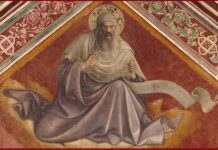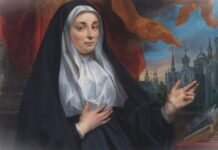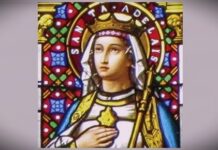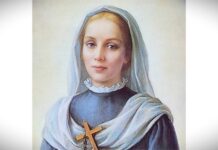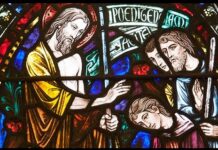Easter Sunday –The Resurrection of the Lord
Gospel Commentary, by Msgr. João Scognamligio Clá Dias, EP
Featured Saints
St. Isidore of Seville, bishop and Doctor of the Church (†636). A disciple of his brother Sr. Leander, whom he succeeded to the episcopal See in Seville. A great writer, he is held as one of the great masters of medieval Europe. He founded the School of Seville for the formation of the clergy. He is the brother, as well, of St. Fulgentius, bishop, and St. Florentina, abbess.

Blessed Francisco Marto (†1919). One of the seers of Fatima. After the apparitions of Our Lady, he was moved by the sole desire to “console and give joy to Jesus.” With this intention he endured terrible sufferings and died with a smile on his lips, shortly before his eleventh birthday.
Blessed Peter of Poitiers, bishop (†1115). Unshakable upholder of integrity and justice, he denounced and excommunicated the French king Philip I for his unlawful second marriage. He was exiled to Chauvigny, where he died.
St. Gaetano Catanoso, priest (†1963). Parish priest from the Diocese of Reggio Calabria, founder of the Congregation of the Veronica Sisters of the Holy Face.
St. Plato, abbot (†814). Abbot of Sakkudion monastery in Constantinople, he ardently fought the Iconoclasts. He was exiled with his nephew, St. Theodore Studites, for opposing the divorce and remarriage of the emperor.
St. Benedict Massarari, religious (†1589). Member of the Order of Friars Minor, he carried out the duties of cook, superior and master of novices in Palermo.
Blessed William Cuffitelli, hermit (†1411). Franciscan tertiary who renounced a passion for hunting to embrace hermitic life in Scicli, Sicily, spending 57 years in solitude and poverty.
Blessed Joseph Benedict Dusmet, Bishop (†1894). Benedictine monk, appointed Bishop of Catania (Sicily). He promoted divine worship and Christian instruction for the people, with special concern for the poor.
Mass Readings
First Reading – Acts 10:34a, 37-43
Peter proceeded to speak and said: “You know what has happened all over Judea, beginning in Galilee after the baptism that John preached, how God anointed Jesus of Nazareth with the Holy Spirit and power. He went about doing good and healing all those oppressed by the devil, for God was with Him. We are witnesses of all that he did both in the country of the Jews and in Jerusalem. They put Him to death by hanging him on a tree. This man God raised on the third day and granted that he be visible, not to all the people, but to us, the witnesses chosen by God in advance, who ate and drank with him after He rose from the dead. He commissioned us to preach to the people and testify that he is the one appointed by God as judge of the living and the dead. To Him all the prophets bear witness, that everyone who believes in Him will receive forgiveness of sins through his name.”
Responsorial Psalm – Ps 118:1-2, 16-17, 22-23 (R. 24)
R. This is the day the Lord has made; let us rejoice and be glad.
or:
R. Alleluia.
Give thanks to the LORD, for He is good,
for his mercy endures forever.
Let the house of Israel say,
“His mercy endures forever.” R.
“The right hand of the LORD has struck with power;
the right hand of the LORD is exalted.
I shall not die, but live,
and declare the works of the LORD.” R.
The stone which the builders rejected
has become the cornerstone.
By the LORD has this been done;
it is wonderful in our eyes. R.
Second Reading – Col 3:1-4
Brothers and sisters: If then you were raised with Christ, seek what is above, where Christ is seated at the right hand of God. Think of what is above, not of what is on earth. For you have died, and your life is hidden with Christ in God. When Christ your life appears, then you too will appear with him in glory.
Gospel – Jn 20:1-9
On the first day of the week, Mary of Magdala came to the tomb early in the morning, while it was still dark, and saw the stone removed from the tomb. So she ran and went to Simon Peter and to the other disciple whom Jesus loved, and told them, “They have taken the Lord from the tomb, and we don’t know where they put Him.” So Peter and the other disciple went out and came to the tomb. They both ran, but the other disciple ran faster than Peter and arrived at the tomb first; he bent down and saw the burial cloths there, but did not go in. When Simon Peter arrived after him, he went into the tomb and saw the burial cloths there, and the cloth that had covered his head, not with the burial cloths but rolled up in a separate place. Then the other disciple also went in, the one who had arrived at the tomb first, and he saw and believed. For they did not yet understand the Scripture that he had to rise from the dead.








